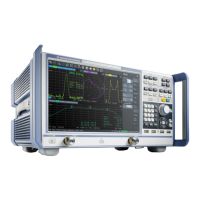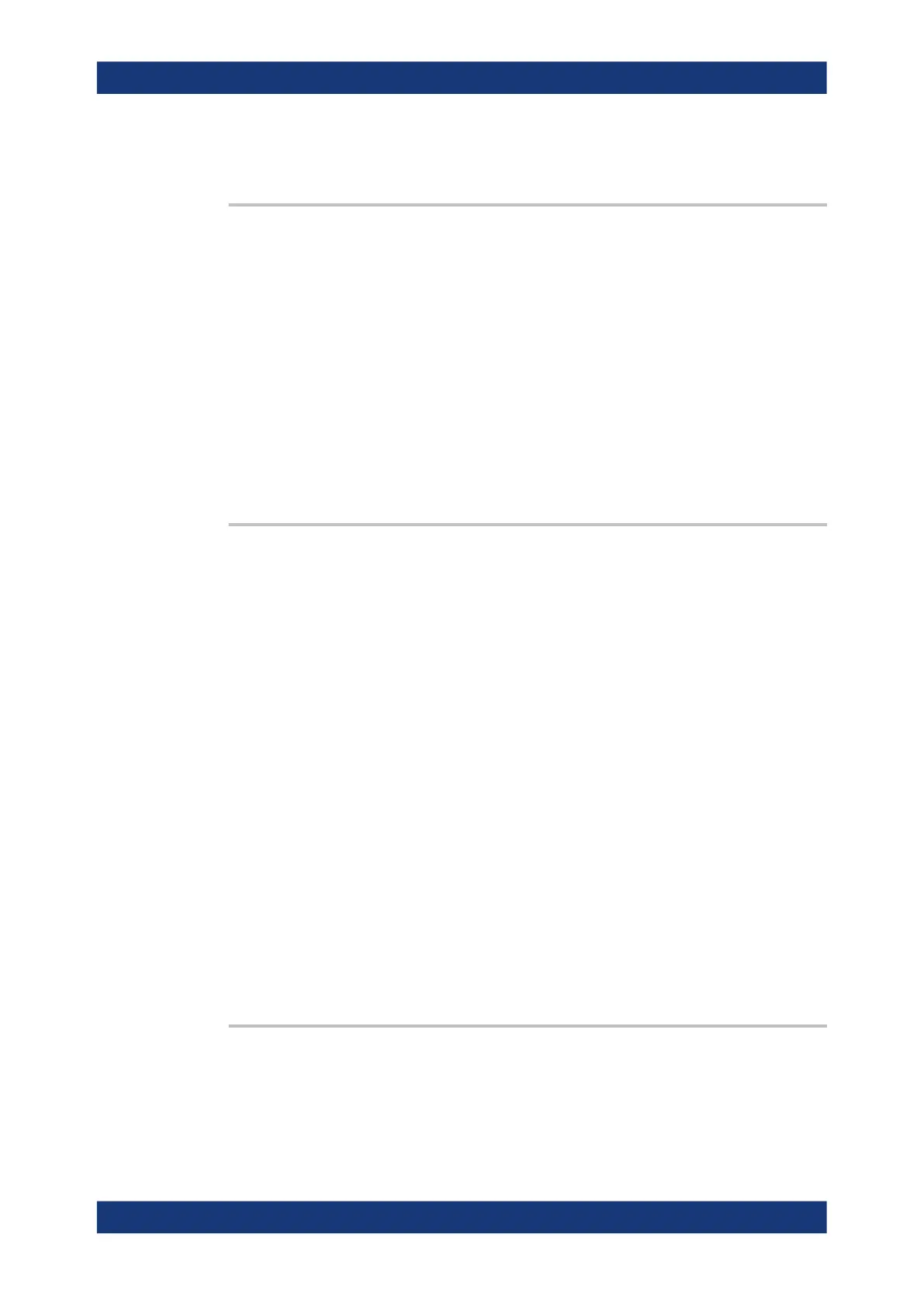Command Reference
R&S
®
ZNB/ZNBT
937User Manual 1173.9163.02 ─ 55
Manual operation: See "Start Distance / Stop Distance" on page 676
CALCulate<Chn>:TRANsform:DTFault:PEAK:COUNt?
If the active trace of channel <Chn> is a Distance to Fault (DtF) trace and DtF limit
checking is enabled, this query returns the number of DtF limit violations of this trace.
Use CALCulate<Chn>:TRANsform:DTFault:PEAK:STATe to enable DtF limit
checking and CALCulate<Chn>:TRANsform:DTFault:PEAK:THReshold to set
the fault limit.
Suffix:
<Chn>
.
Channel number used to identify the active trace
Usage: Query only
Options: R&S ZNB/ZNBT-K3
Manual operation: See "Fault Table" on page 681
CALCulate<Chn>:TRANsform:DTFault:PEAK:DATA<FaultNo>
If the active trace of channel <Chn> is a Distance to Fault (DtF) trace and DtF limit
checking is enabled, this query returns the peak data of DtF limit violation <FaultNo>
<FaultNo> must be between 1 and CALCulate<Chn>:TRANsform:DTFault:PEAK:
COUNt?. The peak data are returned as value pair distance, response value.
Peaks are numbered according to their distance (fault no. 1 has the smallest distance).
Use CALCulate<Chn>:TRANsform:DTFault:PEAK:STATe to enable DtF limit
checking and CALCulate<Chn>:TRANsform:DTFault:PEAK:THReshold to set
the fault limit.
Suffix:
<Chn>
.
Channel number used to identify the active trace
<FaultNo> 1 ... CALCulate<Chn>:TRANsform:DTFault:PEAK:COUNt?
Example: Suppose CALCulate1:TRANsform:DTFault:PEAK:COUNt?
returns 3, then
CALCulate1:TRANsform:DTFault:PEAK:DATA1; DATA2;
DATA3
returns the coordinates of the DtF limit violation peaks.
Options: R&S ZNB/ZNBT-K3
Manual operation: See "Fault Table" on page 681
CALCulate<Chn>:TRANsform:DTFault:PEAK:STATe <DtfPeakState>
If the active trace of channel <Chn> is a Distance to Fault (DtF) trace, this command
allows to enable/disable DtF limit checking.
Suffix:
<Chn>
.
Channel number used to identify the active trace
SCPI Command Reference

